about
Radnor Wentworth’s
Theory of Happiness
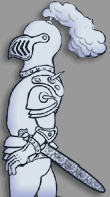
Ever since I created the original Radnor Wentworth’s Theory of Friendship as a printed mini-comic in 1990, there lurked in my mind — in the gloomy back-alley part where I store ancient to-do lists and undone plans — the desire to produce a sequel. I’ve even fantasized an entire series: Radnor Wentworth’s Theories of Life. But reality intervened, as it has a nasty way of doing, and the sequel remained just a fantasy.
By early 2003 I still hadn’t launched a series, so I decided I might as well put the original story online, with the drawings only slightly revised from the 1990 print edition — even though they no longer fairly represented what I was capable of.
Confessions of an Incorrigible Autodidact
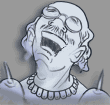
Key to Site Links:
Blue with underdots:
Goes to a new page.
Purple with underdots:
Goes to a page you’ve already visited.
Blue with popup icon
Pops up a related note in a smaller window.
Purple with icon
A note you’ve seen.
Brown with underdots:
Jumps within the page.
I then embarked on a years-long project to strengthen my drawing skills, not just by drawing a lot (I always do that anyway) but by seriously working through the classic books on anatomy, perspective, and composition that had been quietly gathering dust on my bookshelves for years. It may seem strange for an experienced illustrator to go back to the books like an art student; actually, I’d bought the books as a young student but at that time I lacked the focus to properly ponder them. That was a long time ago; now I’m calm enough to pay attention, honest enough to face my own limitations, and dedicated enough to try overcoming them. This self-re-schooling has been one of my major activities during recent years, made more difficult by my frequent digressions into other, simultaneous projects, such as learning a new scripting language, tweaking my computers, rebuilding and expanding my Web sites, creating a website for my sister as a surprise birthday present, writing short stories, and sundry other non-drawing activities. Why, standing waist-deep in this unruly pile of ambitions and distractions, plans and projects, did I decide to add to the heap yet one more digression — namely, an extended revisit with poor metallic Radnor? That will be revealed (sort of) in the following paragraph, which is itself a wee bit strange, as you shall see.
Radnor Rears His Spiky Little Head, Again
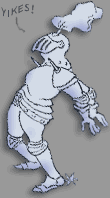
In the midst of this autodidactic Odyssey, between pondering the anatomy of the abdomen, the perplexities of perspective, and the subtleties of sketching, between the distractions of germinating JavaScript, scribing short stories, and tweaking trivial (but time-consuming) skills such as the preparation of the perfect cup of coffee, between my wrenching exercise routines and wracked muscles, between pondering Goya, Daumier, and George Herriman, not to mention revisiting Kafka and Chekov, and, finally, between endlessly drawn study sheets, destroyed in despair as the deficient drafts they demonstrably were, and then drawing some more… I chanced to read a short article, just a minor mention of a study (really a mere survey, possibly bogus like many of the breed) on the roots of human happiness, and though I knew it was just a hint of a claim of a minor correlation, lo, it was enough for the tin-plated Great Theorist himself to pop into my head, and I thought “Radnor would like this study; he would enjoy it; he would have something to say about this” — and so, as though all my existing Sisyphean quests did not already suffice to swamp myself and positively submerge my indispensable assistants, who have one major shortcoming — namely, that they do not exist — yea, in the midst of all this, of years hiding behind my drawing table and computers, reeling from recognition of the reduced range of my real world, losing track of friends, bereft of any sense of time and perhaps of my very senses — I became (if you can believe it) even more lost, obsessed, and perplexed; and so I finally embarked, many years after his birth, on the crowning, time-consuming (but not income-generating) folly in my long sad series of such creative fooleries: namely, the long-missing sequel to poor Radnor’s endlessly theorizing, imaginative, but (alas) wholly imaginary life.
The result, as you have seen, is Radnor Wentworth’s Theory of Happiness .
Conceptually, Theory of Happiness is closely linked to the first Radnor story; it could just as easily be called Theory of Friendship, Part II (and almost was). But stylistically, it looks like it came from another planet. The character is clearly the same, but I doubt if most people, if they didn’t know, would guess that they were drawn by the same artist. This will undoubtedly be disconcerting to some, since there’s a tradition that a “comic strip” (which, I suppose, this sort of is) retains a single unified style from episode to episode. Actually, many strips have evolved over time, but not this much; and the evolution usually occurs over many interations, not just three, and so is less obvious.
 |
 |
 |
| In print, 1990 | On the Web, stage 1 | On the Web, stage 2 |
Cartoon purists (if there are such people) may actually prefer the early or middle style to the most recent one, despite the fact that the newest style required vastly more skill and time to accomplish. I make no claims for the relative virtue of any of these approaches. In any event, as I’ll explain shortly, this new style was not the result of any conscious decision on my part, and may even turn out to be impractical.
Draw the Shades, Dear, I’m All Drawn Out
In retrospect, I can see that the drawing style (so fully rendered that it’s really a painting style) of Theory of Happiness emerged out of a few factors.
Although my long-term artistic goals may involve expressive exaggeration, my self-training method is focused on realism. Why? Look at the work of the greatest cartoon artists, and of the fine artists who were (aesthetically speaking) their first cousins — I mean brilliant draftsmen like Francisco Goya, Honoré Daumier, Walt Kelly, Will Eisner, and a few others. It’s clear that they could all draw as realistically as they wished, even when they didn’t wish. Conversely, cartoonists who lack the skill to draw realistically are usually not very good at drawing cartoonishly either. Ultimately, great cartoon drawing may be more difficult than great realistic drawing; but an understanding of realism — of how things actually look — underlies all the best cartooning, even the most exaggerated.
Despite my iconoclastic tendencies, I’m surprisingly impressionable — just like everyone else. If I’ve just been reading nineteenth-century short stories, and I write a story, it’s likely to sound like it was written in the nineteenth century. Similarly, since my drawing studies for the last few years have mostly centered around realism, this naturally affected the way this new story (done in the midst of those studies) came out.
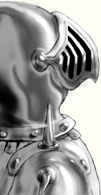
Somehow I can’t imagine Radnor this smooth.
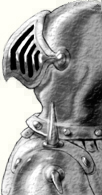
Doesn’t this seem more in character?
There were also other forces pushing me towards a realistic style, without my realizing it at the time. For example, Radnor doesn’t seem like the kind of guy who’d have pristine, polished armor. I found pitted armor much harder to create — even using computer-graphics techniques — and in the process of solving interesting technical problems like this, I forgot all about the option of trying to do it cartoonishly.
Another influence was watching film noir, and noirish films, and becoming entranced with the gloominess and shadows. The limited, flat shadows you see in most cartoons (when there are shadows at all) just don’t seem menacing enough to me. And there are always my dreams — so vivid and searing that I frequently remember them — which are sometimes cartoonish, but rarely in the flat graphic way. Often, they’re in the slightly surreal, rather three-dimensional cartoon style that made such an impression on me as a small child with my Sawyer Viewmaster cartoon disks, and on my numerous solo walks through the sidestreets and back alleys of Coney Island, where giant animated sculptures (long gone now), cartoonish and grotesque, leered and beckoned and belched smoke from high atop the facades of freak shows and strip joints, scaring the living bejezus out of this little boy.
![]() This history is real, but its effect on me is supposition. I had no conscious stylistic plan when I started, but as far as I can guess, these were the influences that merged into the look of this second Radnor story.
This history is real, but its effect on me is supposition. I had no conscious stylistic plan when I started, but as far as I can guess, these were the influences that merged into the look of this second Radnor story.
Is This The End?

I mentioned that this new style may be impractical. That’s because Theory of Happiness took an absurdly long time to execute, even using my elaborate two-computer / three-monitor system and over twenty years of computer-graphics experience. I won’t tell you how long the story took to draw, because you’d laugh at me; but it was approximately forever. Of course, part of that slowness (I’m not sure how much) was because I was teaching myself how to do it; I’ve never cartooned this three-dimensionally before. (Although in computer-tech terms, this is still “two-dimensional” work.) Now that I’ve acquired the general skills and learned the specific techniques to work this way — and have the model sheets showing the main characters from different angles — doing a third story would undoubtedly go much faster… but how much faster, I don’t know.
Which means, of course, that this second Radnor story may be the last. Or maybe not. Or maybe I’ll change the drawing style yet again. Or maybe…
Best wishes,

P.S. You probably think Theory of Happiness is free, but it’s not. I’d like you to “pay” for it by recommending this site to your friends, or mentioning this site to other Web sites that review or link to cartoonists’ work; or by mentioning the illustration section of this site to people you know who buy illustration; or simply by sending me your thoughts. Or any combination of the above.
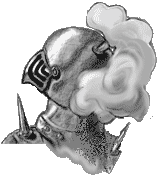
P.P.S. Please don’t send me your great idea for a future Radnor episode; I already have a drawer full of those. If you have an idea for how I might speed up the production of the episodes, I’d like to hear that.









